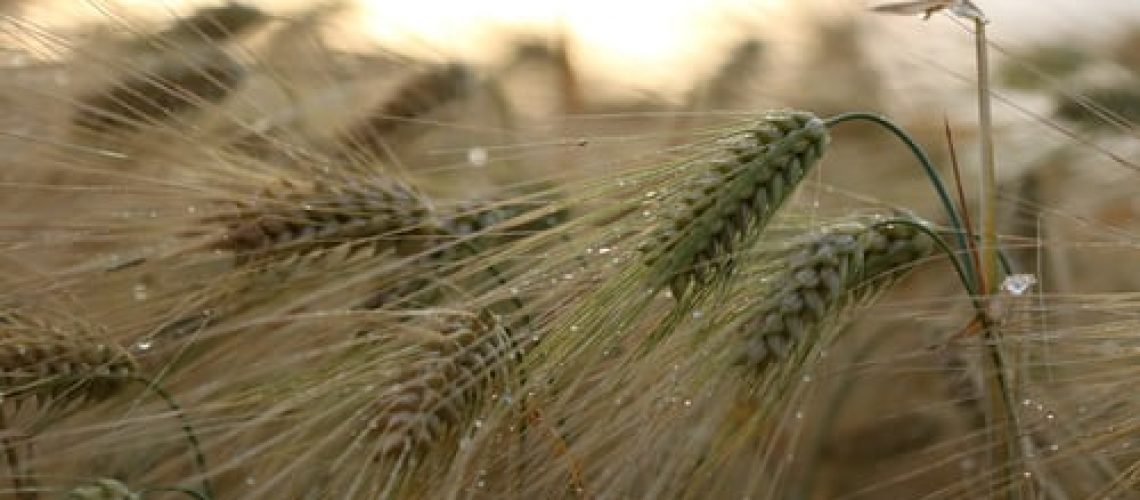

Helen Brabham
PhD MECEA Winner 2020
Revealing the Hidden Talents of Plant Immune Receptors in Barley
- PhD MECEA Winner 2020
- | Part of MECEA
It just takes one small pathogen to change the world. While human pathogens are a direct attack on human health, plant pathogens can devastate harvests, damage food quality, and destroy livelihoods. The evolution of plant pathogens through tiny changes in DNA over generations and chance encounters—when a pathogen just so happens to land on a leaf and begin to grow—can have disastrous consequences for humankind.
Plants have immune receptors which can recognise pathogens and trigger an immune response—often killing the cells and preventing infection. This is effective against biotrophic pathogens; however, necrotrophic pathogens need dead plant cells to grow and can ‘deliberately’ trigger the immune response to aid infection. Unfortunately, having a good immune system is not always better!
Thinking about plant-microbe interactions, their evolutionary history, and ecological context are things I find fascinating, and this drew me to The Sainsbury Laboratory in Norwich to continue studying plant science and start a PhD. I was interested in a project looking at the recognition of multiple pathogens: resistance to two pathogens (barley powdery mildew and rice blast) and sensitivity to a necrotrophic pathogen toxin (victorin) all mapped to the same region of the barley genome. My PhD began with a seemingly simple question—are these three phenotypes caused by different adjacent genes, or is there a single immune receptor that can recognise everything?
The region of the genome is the Mla locus, known for containing the Mla immune receptors that recognise barley powdery mildew. Different accessions of barley carry different alleles of Mla and over 30 have been identified so far (Wei et al., 2002, Seeholzer et al., 2010); the accession of interest here contains Mla3. Over the next few years I investigated this hypothesis, firstly carrying out recombination screens and fine-mapping the Mla3 locus to identify candidate immune receptors. Transgenic barley lines with each of the candidate genes were then generated for testing against all the pathogens. Following setting up the rice blast system in the lab, I was able to confirm that the mildew resistance gene Mla3 is also able to recognise rice blast. The transgenics are currently being tested for sensitivity to the victorin toxin by our wonderful collaborators Tom and Jenny, but genetic evidence indicates this is also Mla3!
Most plant immune receptors identified so far recognise only one pathogen, so the characterisation of Mla3 provides a great system to understand how it recognises multiple species—and could uncover new key components of the immune system. Mla3 highlights the complicated relationship between plants and pathogens: the trade-off between resistance to biotrophic pathogens and sensitivity to toxins from a necrotrophic pathogen. This balance raises a potential hidden danger of deploying certain resistance genes in the field, and a similar story occurred in oat with victorin and oat crown rust in the 1940s (Meehan and Murphy, 1946).
In addition, there are other immune receptors at the Mla locus that show great diversity. Using RNAseq across different barley accessions we were able to identify many different alleles including ones with additional protein domains—thought to aid in pathogen detection. Looking across different grass species we found this additional domain evolved after the speciation of the ‘cute-grass’ Brachypodium and is present in oat, wheat, and other wild species (Brabham et al., 2018). Not only Mla, but also the other genes in this region provide great opportunity for new immune receptors for use in crop species. It is exciting to imagine what other secrets this resistance locus may reveal: more super immune receptors?!
Safe to say I have really enjoyed this project and the opportunities to connect the molecular basic research with the real potential for agricultural application—these are the benefits of working with barley! Outside of the lab, outreach and public engagement have been a highlight of my PhD and I treasure being able to share our science with the wider community: the annual Norwich Science Festival and Women of the Future Conference are particular favourites. Overall, although the work has been challenging, I am grateful for all the exciting opportunities and wonderful friends and colleagues made during the last few years, and I look forward to where my plant science career will take me!
References:
- Brabham, H.J., Hernández-Pinzón, I., Holden, S., Lorang, J., Moscou, M.J., 2018. An ancient integration in a plant NLR is maintained as a trans-species polymorphism. bioRxiv 239541.
- Meehan, F., Murphy, H.C., 1946. A New Helminthosporium Blight of Oats. Science (80-. ). 413–414
- Seeholzer, S., Tsuchimatsu, T., Jordan, T., Bieri, S., Pajonk, S., Yang, W., Jahoor, A., Shimizu, K.K., Keller, B., Schulze-Lefert, P., 2010. Diversity at the Mla powdery mildew resistance locus from cultivated barley reveals sites of positive selection. Mol. Plant. Microbe. Interact. 23, 497–509.
